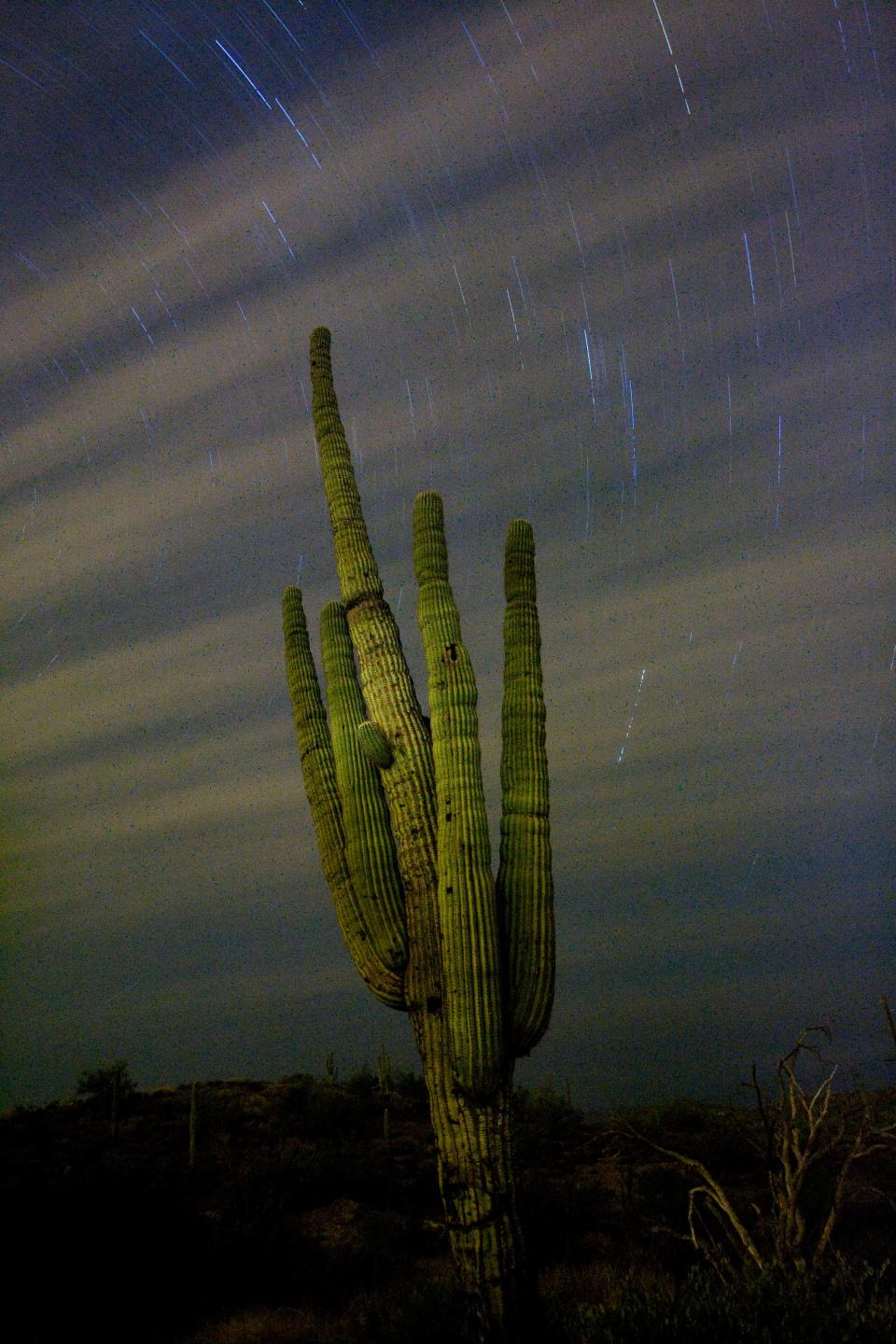First meteor shower of 2024 peaks tonight. How to see the Quadrantids in Arizona
The first meteor-shower peak of 2024 is about to occur.
Skywatchers can see the brief but intense peak of the Quadrantid meteor shower overnight on Jan. 3-4. It promises an exhilarating celestial spectacle for stargazers in Arizona.
The Quadrantid meteor shower shower can produce up to 200 meteors per hour under optimal conditions.
As one of the more concentrated meteor showers, the Quadrantids offer a captivating experience for skywatchers. To make the most of this celestial event in Arizona, find a secluded viewing spot away from city lights and give your eyes 15 to 20 minutes to adjust to the dark.
Here is everything to know about seeing the Quadrantids meteor shower in 2023 and 2024.
Celestial calendar: 2024's biggest astronomical events - every eclipse, meteor shower and full moon
What is the Quadrantids meteor shower?
The Quadrantids meteor shower occurs annually in late December and early January. It is known for its brief but intense peak, during which it can produce a high number of meteors.
Theodore Kareta, a postdoctoral researcher at Lowell Observatory in Flagstaff, said, “They might not last as long as some of the other meteor showers you might be familiar with, but they're certainly just as photogenic and impressive.”
Where to look in the sky for the Quadrantids meteor shower
Meteor showers are named after the constellation that the meteors appear to originate from.
“The Quadrantids are named after Quadrans Muralis, a constellation that no longer exists," Kareta said. "The International Astronomical Union reorganized the constellations in 1922, so the Quadrantids now appear to originate in the constellation Boötes.”
Ursid meteor shower 2023 Here's when it peaks and the best time to see it in Arizona
When can you see the Quadrantid meteor shower?
The Quadrantids will be visible between Dec. 28, 2023, and Jan. 12, 2024, according to space.com.
What time is the Quadrantids peak?
The Quadrantids will peak on the night of Jan. 3-4.
“I'd advocate for getting up real early on the Fourth. The Quadrantids don't last that long, unlike the Geminids or the Perseids, for instance, so a few days later won't cut it,” said Kareta.
Where can I watch the Quadrantids meteor shower?

No special equipment or advanced skills are required to view a meteor shower. A clear sky and patience are all that's required.
Despite their origination point, meteors can appear anywhere in the sky.
“As with other meteor showers, you should find a spot outside where you can be safe enough to let your eyes adjust to the darkness. If you've got a big backyard or live near a local park, that might be enough, but darker skies are always better,” said Kareta.
“The Quadrantids need dark skies especially, as even though there can be lots of them, many of them will be challenging to see even in moderate light pollution,” said Kareta.
Arizona's darkest places These parks and cities have the best night skies for stargazing
What is the rate of the Quadrantids meteor shower?
At their peak, the Quadrantids can generate around 60 to 200 meteors per hour under optimal conditions.
“The Quadrantids at their peak can rival the other big meteor showers with meteor rates of maybe 100 per hour under ideal conditions. It's a very active meteor shower, despite its short duration,” said Kareta.
The exact number of meteors visible depends on factors such as the observer's location, the time of observation and the visibility conditions. It's worth noting that the Quadrantids are not as consistent or predictable as some other meteor showers, making them a bit more challenging to observe.
What is the parent comet of the Quadrantids?
Despite the Quadrantids being bright and very active, Kareta said researchers didn't find what made them until 2003.
“Their 'parent body,' the solar system object which produced them, is a dormant comet named 2003 EH1,” said Kareta. “Studies of the meteors themselves have shown that the meteor shower isn't more than a few hundred years old, so 2003 EH1 must have been acting like a regular comet, with a fuzzy atmosphere and tail, just two or three hundred years ago and we found it just after it went dormant,” said Kareta.
Kareta was the first scientist to characterize the surface of 2003 EH1.
“It looks a bit different than other comets. It's probably due to 2003 EH1 having previously been in an orbit that took it very close to the sun and thus altered some of its surface materials,” said Kareta.
What is the next meteor shower 2024?
The Quadrantids will be the last meteor shower of 2023. The first meteor shower that starts in 2024 is the Lyrids, which takes place in April.
Got a story you want to share? Reach out at Tiffany.Acosta@gannett.com. Follow @tiffsario on Instagram.
Support local journalism and subscribe to azcentral.com.
This article originally appeared on Arizona Republic: Quadrantid meteor shower 2024: Where and when to see it peak

